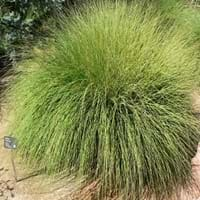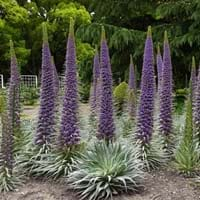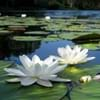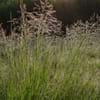Life Span
Perennial
Biennial
Origin
Southwestern United States
Canary Islands
Types
Not Available
Not Available
Habitat
Sandy areas
tropical environments
USDA Hardiness Zone
7-11
8-10
AHS Heat Zone
12 - 1
9 - 1
Sunset Zone
7, 8, 9, 10, 11, 12, 13, 14, 15, 16, 17, 18, 19, 20, 21, 22, 23, 24
21,22
Habit
Clump-Forming
Upright/Erect
Minimum Height
Not Available
Minimum Width
Not Available
Flower Color
Non Flowering Plant
Light Blue, Blue Violet
Flower Color Modifier
Bicolor
Bicolor
Fruit Color
Non Fruiting Plant
Non Fruiting Plant
Leaf Color in Spring
Green
Green, Gray Green
Leaf Color in Summer
Light Green
Green, Gray Green
Leaf Color in Fall
Green
Green, Gray Green
Leaf Color in Winter
Green
Light Green
Leaf Shape
Long linear and narrow
Lobed
Plant Season
Summer, Fall
Not Available
Sunlight
Full Sun, Partial Sun
Full Sun
Type of Soil
Clay, Loam, Sand
Loam, Sand
The pH of Soil
Acidic, Neutral, Alkaline
Neutral, Alkaline
Soil Drainage
Well drained
Well drained
Bloom Time
Late Spring, Early Summer, Summer
Early Summer, Summer
Tolerances
Drought
Not Available
Where to Plant?
Container, Ground, Pot
Ground
How to Plant?
Seedlings
Seedlings, Stem Cutting
Plant Maintenance
Low
Medium
Watering Requirements
Requires watering in the growing season, Water occasionally
Medium
In Summer
Lots of watering
Lots of watering
In Spring
Moderate
Moderate
In Winter
Average Water
Average Water
Soil pH
Acidic, Neutral, Alkaline
Neutral, Alkaline
Soil Type
Clay, Loam, Sand
Loam, Sand
Soil Drainage Capacity
Well drained
Well drained
Sun Exposure
Full Sun, Partial Sun
Full Sun
Pruning
Prune if you want to improve plant shape, Remove damaged leaves, Remove dead branches, Remove dead leaves
Remove damaged leaves, Remove dead branches, Remove dead leaves
Fertilizers
fertilize in spring
All-Purpose Liquid Fertilizer
Pests and Diseases
Red blotch
Red blotch
Plant Tolerance
Drought, Heat Tolerance
Drought
Flower Petal Number
Single
Single
Showy Fruit
No
Not Available
Foliage Texture
Fine
Fine
Foliage Sheen
Matte
Matte
Attracts
Birds, Deers, Insects
Not Available
Allergy
no allergic reactions
Not Available
Aesthetic Uses
Beautification, Ground Cover, Landscape Designing, Showy Purposes
Showy Purposes
Beauty Benefits
Not Available
Not Available
Environmental Uses
Food for animals, Nesting sites for birds, Shelter for wildlife
Air purification
Medicinal Uses
Sore throat
Not Available
Part of Plant Used
Leaves, Root
Flowers, Leaves
Other Uses
Can be made into a herbal tea, Decoration Purposes, Showy Purposes, Used as Ornamental plant
Showy Purposes
Used As Indoor Plant
Yes
Sometimes
Used As Outdoor Plant
Yes
Yes
Garden Design
Feature Plant, Foundation, Groundcover, Mixed Border, Wildflower
Container, Feature Plant, Mixed Border, Wildflower
Botanical Name
MUHLENBERGIA rigens
ECHIUM pininana
Common Name
Deer Grass
Giant Viper's Bugloss, Pine Echium, Tree Echium
In Hindi
हिरण घास
Tree Echium
In German
Deer Grass
Baum Aciam
In French
cerfs Herbe
Arbre ACIAM
In Spanish
Ciervo Hierba
árbol Aciam
In Greek
ελάφια Grass
δέντρο Aciam
In Portuguese
cervos grama
árvore Aciam
In Polish
Deer Trawa
drzewo Aciam
In Latin
deer Grass
lignum Aciam
Phylum
Anthophyta
Magnoliophyta
Class
Liliopsida
Magnoliopsida
Family
Poaceae
Boraginaceae
Genus
Muhlenbergia
Echium
Clade
Angiosperms, Commelinids, Monocots
Angiosperms, Asterids, Eudicots
Tribe
Not Available
Not Available
Subfamily
Chloridoideae
Not Available
Number of Species
Not Available
Not Available
Difference Between Deer Grass and Tree Echium
If you are confused whether Deer Grass or Tree Echium are same, here are some features about those plants to help you choose better. Many people think that these two plants have the same characteristics, but one can see Deer Grass and Tree Echium Information and learn more about it. Fertilizers required for proper growth of Deer Grass are fertilize in spring, whereas for Tree Echium fertilizers required are All-Purpose Liquid Fertilizer. Hence, one should know the basic difference between Deer Grass and Tree Echium if you are planning to have them in your garden to enhance its beauty.
<
Flowering PlantsImportance of Deer Grass and Tree Echium
Want to have the most appropriate plant for your garden? You might want to know the importance of Deer Grass and Tree Echium. Basically, these two plants vary in many aspects. Compare Deer Grass and Tree Echium as they differ in many characteristics such as their life, care, benefits, facts, etc. Every gardener must at least have the slightest clue about the plants he wants to plant in his garden. Compare their benefits, which differ in many ways like facts and uses. The medicinal use of Deer Grass is Sore throat whereas of Tree Echium is Not Available. Deer Grass has beauty benefits as follows: Not Available while Tree Echium has beauty benefits as follows: Not Available.
Compare Facts of Deer Grass vs Tree Echium
How to choose the best garden plant for your garden depending upon its facts? Here garden plant comparison will help you to solve this query. Compare the facts of Deer Grass vs Tree Echium and know which one to choose. As garden plants have benefits and other uses, allergy is also a major drawback of plants for some people. Allergic reactions of Deer Grass are no allergic reactions whereas of Tree Echium have Not Available respectively. Having a fruit bearing plant in your garden can be a plus point of your garden. Deer Grass has no showy fruits and Tree Echium has no showy fruits. Also Deer Grass is not flowering and Tree Echium is not flowering . You can compare Deer Grass and Tree Echium facts and facts of other plants too.





